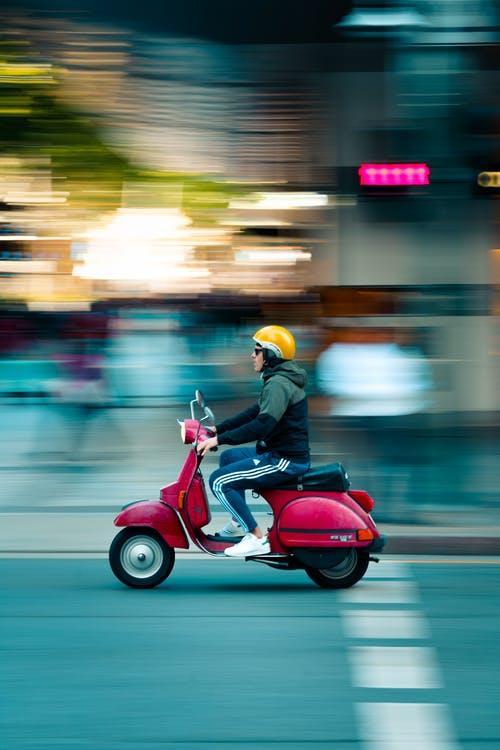Scooters are driving the recent micromobility revolution — but don’t count out the humble bike just yet.
By Kea Wilson
Between 2018 and 2019, the number of total microtransit trips on American streets soared from 84 million to 136 million, according to the National Association of City Transportation Officials, but bikeshare grew a respectable 10 percent, even as the number of bikeshare systems shrank four percent overall. Scooter trips, though, more than doubled over the same period, as a combination of venture capital and growing revenues sent scooters rolling through more cities across America than ever before.
The numbers represent a clear win for safe and sustainable transportation overall, since 45 percent of riders surveyed for the study said their scooter or bike trip had replaced a car trip. But for some cycling advocates, it brought up troubling questions about why one of the most time-tested transportation technologies isn’t seeing the same scale of growth — and what the e-scooter’s recent success means for the long-term role of sharing systems in the active transportation world.
On the one hand, the runaway success of the e-scooter might just be a matter of basic economics. Industry insiders say the typical dockless e-scooter costs roughly half as much to manufacture as the average shared, dockless bicycle — and docked bikeshare cycles, which are the mode of choice in most city-subsidized systems, can cost far more. Given that riders are willing to pay roughly the same amount for both modes, the e-scooter can give a corporation a lot more bang for its buck — and corporations can then afford to put a lot more vehicles on the streets, within easy reach of would-be riders.
“Dockless scooters have caught on for a simple reason — because they’re readily available when they’re deciding how to make a trip,” said Adam Kovacevich, Lime’s head of government relations. “Our hope is, someday, you’ll leave your building, and when you look left and look right, there’s a scooter. Proximity is massively important for driving usage, and that’s an inherent limitation of the docked model that we see in so many bike shares.”
But Lime hasn’t experienced equal financial success with all dockless vehicles. Back when it was still called “Limebike,” the micromobility giant famously abandoned its first-gen dockless bike fleets in many cities before deploying oodles of cheaper e-scooters in U.S. cities instead. Now, the company is experimenting with bikes in a limited number of communities again, but vehicles with footboards still outnumber vehicles with pedals in virtually all of its fleets.
The company insists that cost considerations aren’t the only reason why it made the shift — and that public preference for scooters has been the primary driving force.
“If you compare the usage per vehicle per day, scooters attract more riders — there’s no doubt,” said Kovacevich. “The investment in scooters was really driven by how popular they were amongst the public. Some people seem to look at a bike and think it’s going to require more work than they’re really willing to put in; maybe they’re dressed nicely for the day and don’t want to get sweaty, for instance. I’m not sure that all cities have fully appreciated just how popular scooters are with the public as a way to get around.”
But that popularity probably has something to do with the sheer proliferation of scooters on U.S. streets, too. Practically since they launched, scooter companies have saturated cities with as many vehicles as possible to put them within easy, convenient reach of riders — a strategy that’s prohibitively expensive to do with shared bicycles, much less bikes that sit on spendy-yet-durable docks.
Still, flooding the zone has its limits. NACTO found that after the number of scooters on the streets hit a certain critical mass unique to each city, the average rides per vehicle per day dropped off sharply. Ridership in the bikeshare networks in the study sample, by contrast, tended to grow as the number of available bikes and docking stations did — and among the most successful cities, that growth didn’t appear to be close to reaching a ceiling.
“Scooters really tapped into that lightning rod of latent demand for non-driving — and because they could deploy vehicles very quickly, they did so very quickly,” said Caroline Samponaro, head of micromobility policy for Lyft, which runs some of the nation’s most successful bikeshare companies in addition to a fleet of scooters. “But scooters don’t have the network effect that docked bikeshare has, where as the fleet expands, the ridership expands.”
That impressive network effect, though, may not be universal. NACTO found that a stunning 87 percent of bike share trips in 2019 took place in just six regions: the San Francisco Bay Area, Boston, Chicago, Honolulu, New York, and Washington, D.C. And in all of them besides Honolulu, the community has contracted with Lyft as its micromobility operator — and Samponaro says that’s a testament to those cities’ willingness to follow Lyft’s recipe for bikeshare success.
“The public-private partnerships in all these cities aren’t identical, but what they all have in common is they’re long term agreements, and we’re the only provider giving the city this service,” Samponaro says. “That gives us the ability to think with a city, long term, about what they want their whole transportation network to look like. Scooters have typically be rolled out on a six month horizon, maybe a 12 month horizon. They’re very much trying to capture that initial interest; that’s their focus, rather than the long term.”
There may be no better testament to the success of Lyft’s approach than its Citi Bike program in New York City, which NACTO found to have the single largest ridership of any bikeshare company in the U.S. last year. And Samponaro says it’s no accident that the program’s success has been mirrored by continual enhancement in the Big Apple’s bike lane network.
“The other key to success that’s important to call out is that the period of time in which we’ve grown Citibike is exactly the same period of time in which we worked with the city to make a lot of infrastructure improvements,” Samponaro said. “It’s a virtuous cycle; potential riders are seeing signals on the street that bikes belong on the street, and then the bikes are right there for them to ride.”
That virtuous cycle has also made cycling in New York more gender-diverse — something that NACTO found scooter companies are struggling with. In surveys of markets across the U.S., the association consistently found that riders were between 66 and 81 percent male.
“When we introduced protected bike lanes, we also saw twice as many women riding,” Samponaro said. So we’ve seen bike share start to look more and more like New York City itself, every day.”
But micromobility companies emphasize that at the end of the day, bike share and scooter share are not fundamentally in competition with one another, because bikes tend to be popular for longer trips, and scooters for shorter ones. And what all riders can probably agree on is how exciting it is to have a solo transportation option that’s safe, affordable, and green — unlike driving a car.
Link: https://usa.streetsblog.org/2020/08/31/micromobility-trips-explode-60-percent-in-one-year-but-bikeshares-lag/
Source: https://usa.streetsblog.org

















Leave a Reply